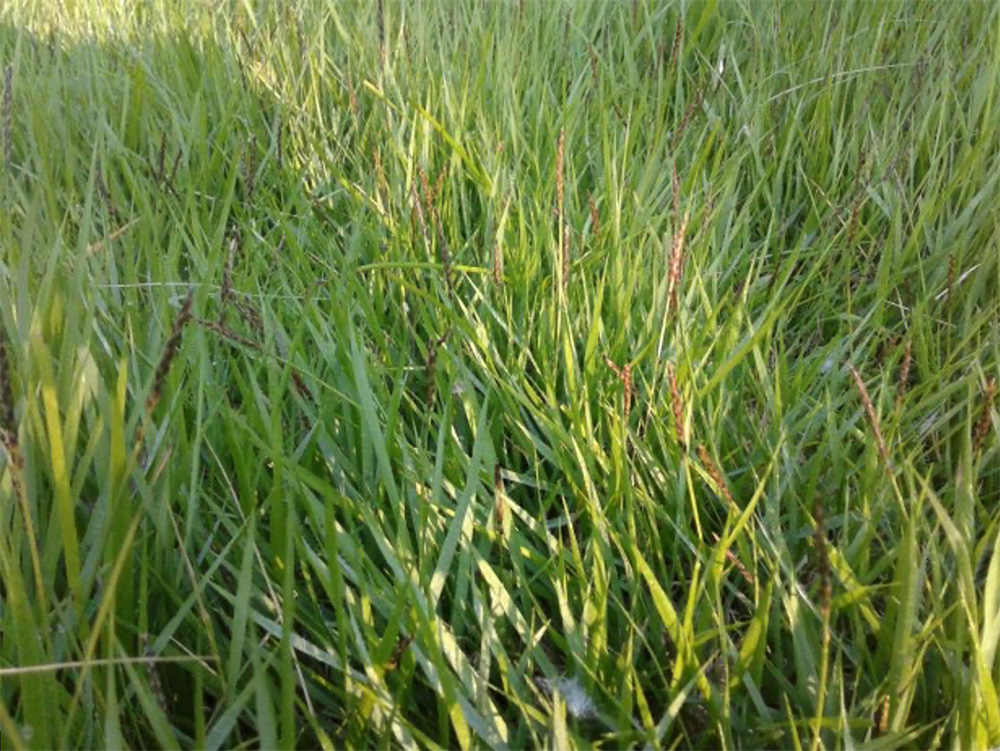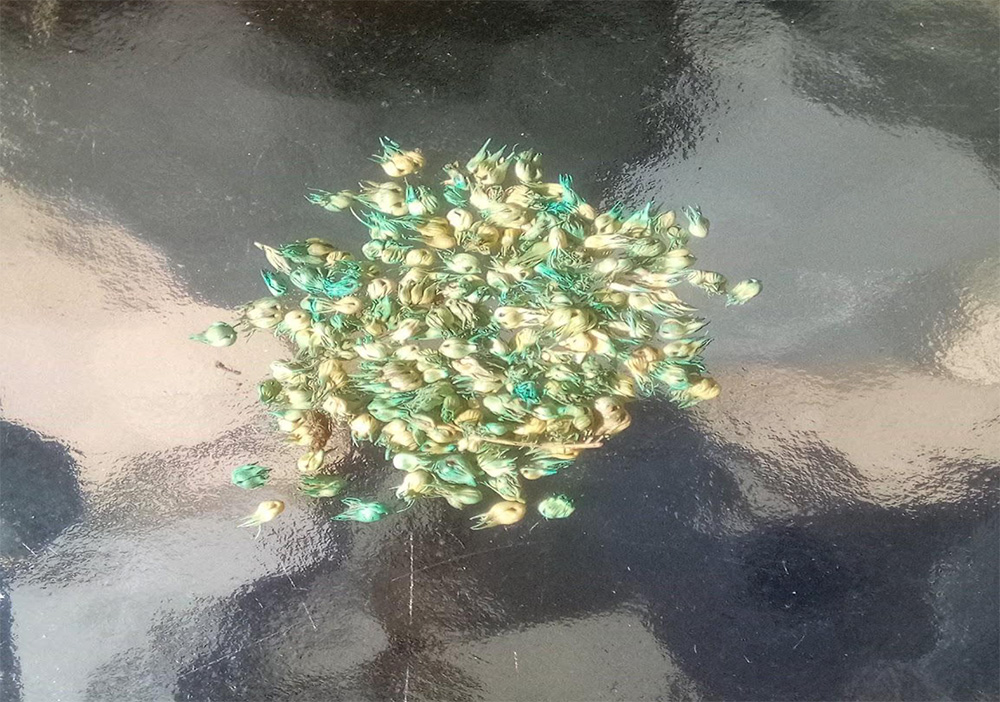
Pictured are the male flowers of our Cody variety.
At the height of the housing crisis and the recession of 2008, my wife and I purchased our home in the 7500 block of Oak Street in Kansas City, Missouri. A couple years later a virus came through and killed the Bermuda grass in the front yard, which gave us a great opportunity to go native.
We choose to plant Buffalo Grass.
Buffalo Grass (Buchloe dactyloides) is the only native grass to North America. It has both male and female plants (pictured are the male plants in “bloom”) and grows six to eight inches in height. It spreads primarily from runners called stolons. It will remain green during periods of drought, facilitated by roots that extend up to fifteen feet underground.
I recall the price of the seed (bracts) was about $9 a pound. When purchasing seed you will get both male and female plants. Some people prefer not to have the flower stalks because they feel that it provides a “weedy” appearance. To others the appearance is more of a pasture or prairie. In order to get just female plants one must buy plugs or sod which comes at a much higher price. Another benefit of going with plugs or sod is a quicker goal of established turf.
We tilled up the yard in the spring, raked up what remained of existing vegetation and spread the seed. We did not use chemicals in the establishment of the turf so that meant not only was the site preparation labor intensive, so was the removal of seedlings of non-Buffalo grass plant emergence. We were not certain that the amount of seed we used would fill in the space by the end of summer. We were pleasantly surprised the aggressively spreading stolons of the plants did just that.
As a native plant, Buffalo grass is disease resistant and does not require fertilization. And after the initial two weeks of twice daily waterings to get the bracts to release the seeds and for the seeds to germinate, we have not needed to water even in times of drought.
A drawback to Buffalo grass is because it is a warm season grass, it takes longer to green up in the spring and will go dormant more quicker in the fall/winter.
Our Buffalo grass gets mowed two or three times a year. We receive a fair number of inquiries about the grass when people walk by on our sidewalk and we are out working in the yard. The comments have been overwhelmingly positive.
We may need to replace it in a few years as the shade from the Gala apple tree and Overcup oak (which were not in our yard when we planted the Buffalo grass) is producing enough shade that it is impacting the integrity of the sun-loving Buffalo.

The treated seeds shown above are actually seed bracts. Each one contains two to three seeds.
Much research has gone into Buffalo grass by colleges of agriculture. As it was(is) a dominate plant for prairie species to forage, it is highly valued as a favorable range plant. Therefore there is considerable amount of information available on the web and from county extension services offices.

Shade is affecting parts of the Buffalo Grass cover in the front yard.
About the author – Steve Oakes is a retired Kansas City, Kansas, Main library associate and a former National Park Ranger at Denali, Carlsbad and Cuyahoga Valley National Parks. Oakes and his wife enjoy hiking, backpacking, bicycle touring, canoeing and other outdoor adventures including gardening and native plant landscaping.






